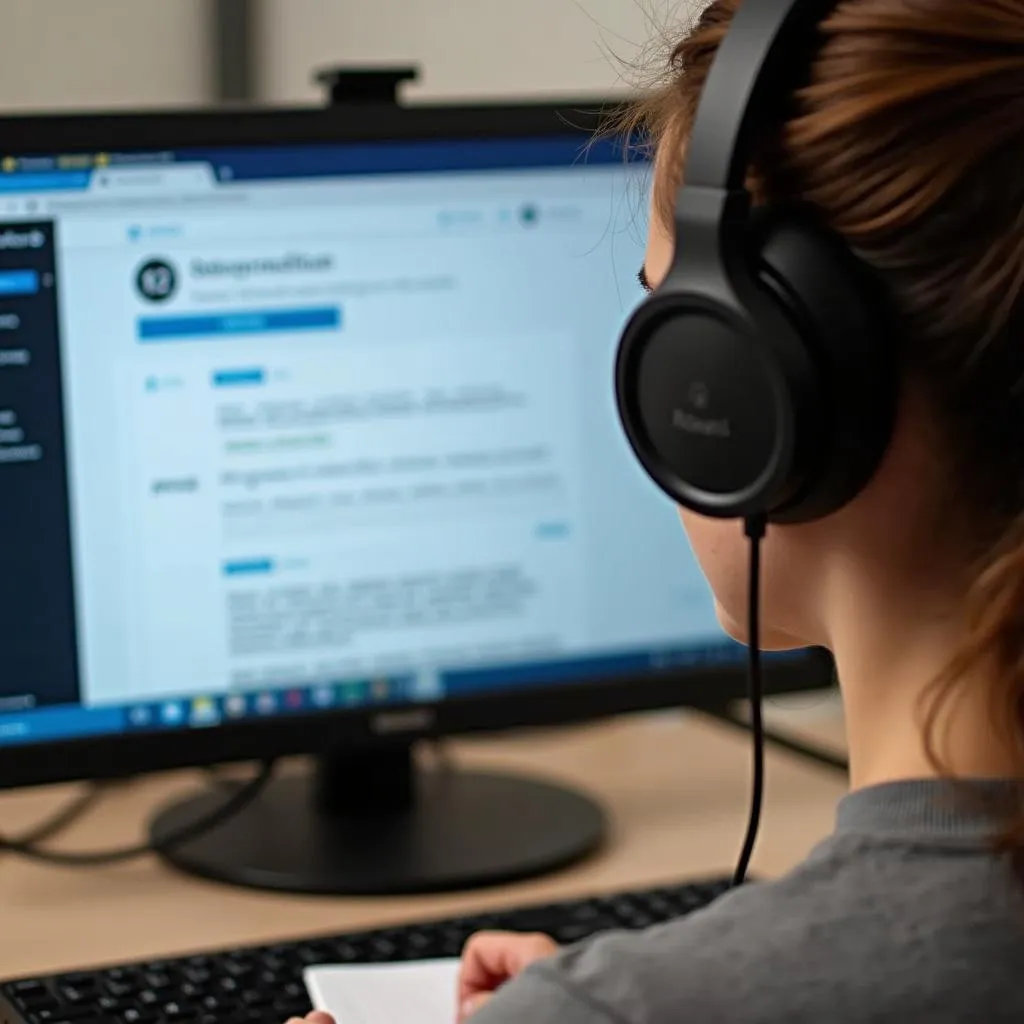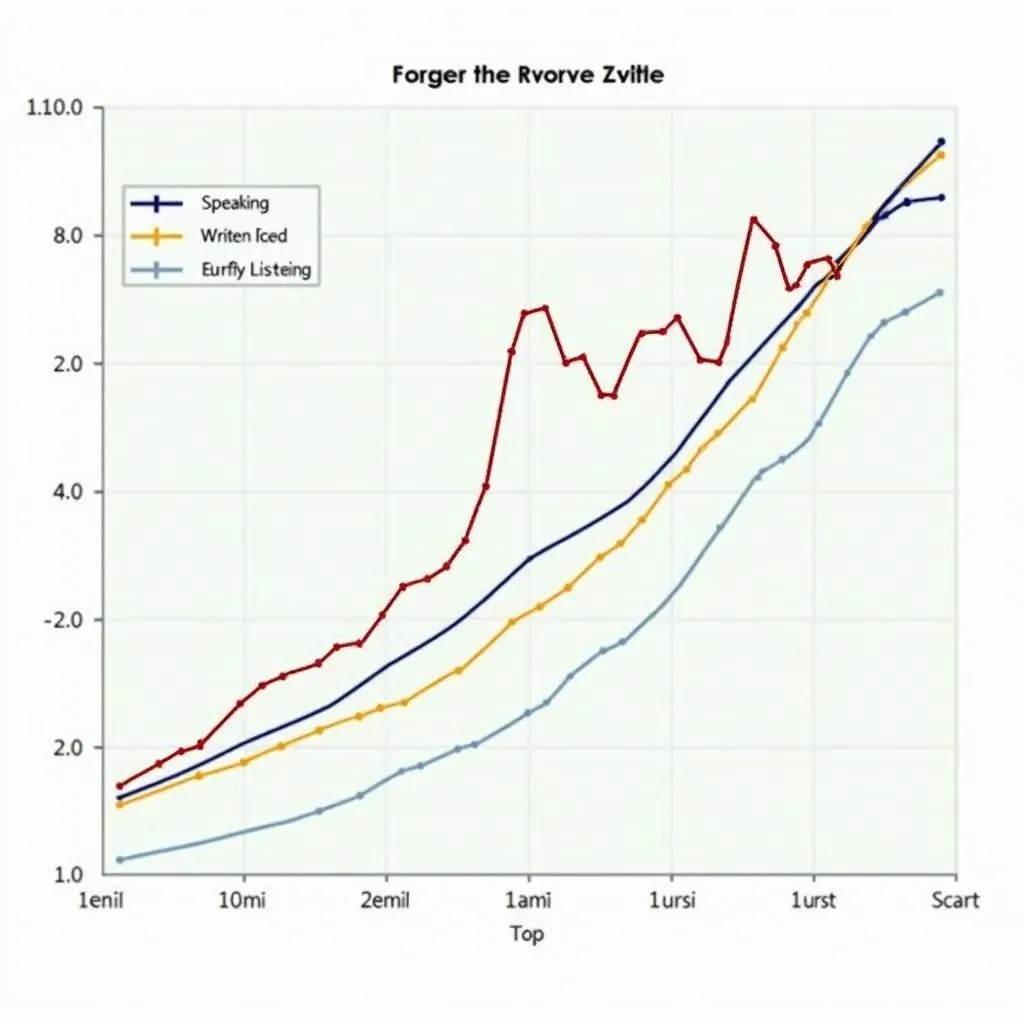Preparing for the Pearson Test of English (PTE) Academic requires more than just studying materials; it demands recreating the actual test environment. This guide will walk you through effective strategies to simulate exam conditions for PTE, helping you boost your confidence and performance on test day.
Understanding the Importance of Exam Simulation
Simulating exam conditions is crucial for PTE success. It helps you:
- Familiarize yourself with the test format
- Manage time effectively
- Reduce test anxiety
- Identify areas for improvement
By practicing in a mock exam setting, you’ll be better equipped to handle the real PTE experience.
 PTE exam simulation setup
PTE exam simulation setup
Creating the Perfect PTE Simulation Environment
Setting Up Your Space
- Choose a quiet room with minimal distractions
- Use a desk and chair similar to those in test centers
- Ensure proper lighting to avoid eye strain
- Keep the room temperature comfortable
Gathering Essential Equipment
- Computer with a stable internet connection
- High-quality headphones
- Notepad and pencil (for the writing section)
- Timer or stopwatch
Dr. Emma Thompson, a renowned PTE expert, advises: “The closer your practice environment resembles the actual test center, the more prepared you’ll feel on exam day.”
Simulating PTE Test Sections
Speaking and Writing
- Use official PTE practice software or online platforms
- Set strict time limits for each task
- Record your speaking responses for later analysis
- Type your essays using the on-screen text editor
How to practice speaking in exam-like conditions for PTE offers valuable insights into perfecting your speaking skills under pressure.
Reading and Listening
- Take full-length practice tests without interruptions
- Use headphones to simulate the test center experience
- Stick to the allotted time for each section
- Practice with various question types and difficulty levels
 PTE timed practice session
PTE timed practice session
Time Management Strategies
Effective time management is key to PTE success. Here’s how to improve:
- Use a timer for each task and section
- Practice pacing yourself through sample questions
- Allocate time for reviewing answers in the reading and listening sections
- Learn when to move on from difficult questions
“Time management can make or break your PTE score,” says Professor David Lee, PTE researcher. “Regular timed practice is the best way to develop this crucial skill.”
Replicating Test Center Rules
To truly simulate exam conditions for PTE:
- Follow the same identification process as the real test
- Take only allowed items into your practice space
- Observe the same break rules as the actual exam
- Practice without access to unauthorized aids or materials
PTE preparation at home provides additional tips for creating an authentic test environment in your own space.
Analyzing Your Performance
After each simulated test:
- Review your scores and identify weak areas
- Listen to your speaking recordings and compare them to sample answers
- Analyze your writing using PTE scoring criteria
- Track your progress over time to gauge improvement
How to analyze your performance in PTE speaking offers valuable techniques for self-assessment and improvement.
 PTE performance analysis chart
PTE performance analysis chart
Building Mental Resilience
Simulating exam conditions isn’t just about the physical environment; it’s also about mental preparation:
- Practice stress-reduction techniques like deep breathing
- Visualize success in the test environment
- Develop a positive pre-test routine
- Learn to refocus quickly if you get distracted
Gradual Intensity Increase
Start with partial simulations and gradually work up to full mock exams:
- Begin with individual section practice
- Move on to half-length tests
- Progress to full-length simulations
- Finally, recreate an entire test day experience, including travel time
How to build fluency for PTE speaking section can help you develop the confidence needed for the speaking tasks.
Conclusion
Simulating exam conditions for PTE is an essential part of your preparation strategy. By recreating the test environment, managing your time effectively, and building mental resilience, you’ll be well-equipped to face the real PTE with confidence. Remember, consistent practice in exam-like conditions is key to achieving your desired score.
FAQ
How often should I practice under simulated exam conditions?
Aim for at least one full-length simulated test per week in the month leading up to your PTE exam.
Can I use a regular digital clock instead of a countdown timer?
While a digital clock can work, a countdown timer is preferable as it mimics the actual test interface and helps with time management.
Is it necessary to wear noise-cancelling headphones during practice?
While not mandatory, noise-cancelling headphones can help replicate the test center environment and improve focus.
How can I simulate the typing experience for the writing section?
Use an on-screen text editor with a similar layout to the PTE interface, and practice typing within the character limit.
Should I take breaks during my simulated practice tests?
Yes, incorporate the same 10-minute break you’ll have during the actual PTE to make your simulation as realistic as possible.
How can I recreate the pressure of the real exam during practice?
Set high stakes for your practice tests, such as rewarding yourself for reaching target scores or involving a study partner to create accountability.